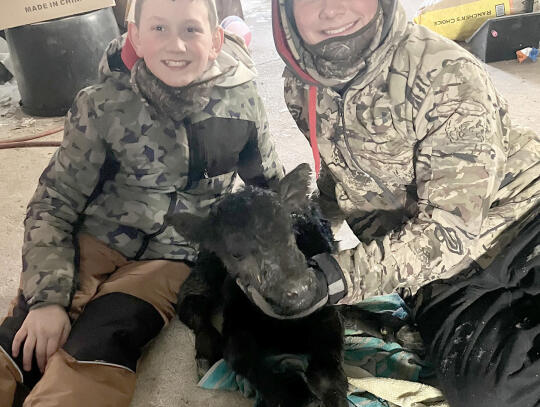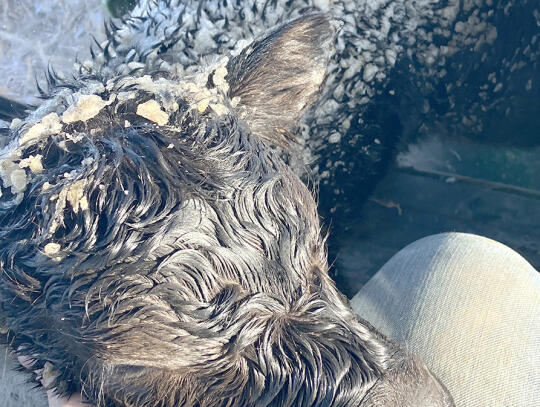Calving, lambing, and kidding out goats in January is always a chilly endeavor.
But typically not as bitterly cold as Jan. 11-20 when an Arctic airmass descended over Nebraska, spurring round-the-clock windchill warnings and advisories for nearly that entire stretch of days.
Caring for livestock in this type of weather is hard, especially when newborns are involved.
“This cold is almost like three steps: the good, the bad, and the ugly,” Jason Gerdes of Gerdes Farms near Fairfield, where he keeps a commercial herd,said. “The good is you and mom working together and nobody is getting stuck in the mud, the bad is the extra cost and time, and the ugly is that it’s so cold that the calf stops nursing, fighting the frostbite of ears and hooves, the struggle of why am I out here doing this?”
Gerdes, his wife Becky, and three boys—14-year-old Jackson, 11-year-old Barrett, and 8-year-old Easton—were checking cows every couple hours night and day, hoping to catch new calves before they froze.
Calves, born wet, can sometimes become dangerously hypothermic on a cold night typical of January, but the Arctic blast made calving a near-constant emergency.
A calf that becomes chilled down often needs to be taken away from its mother temporarily to dry off, warm up, and be fed with colostrum—a mother cow’s time-sensitive first milk, packed with immunity agents and nutrients. A chilled calf, unable to get up to nurse colostrum on its own, will die without help.
While an older cow with mothering experience may be able to beat the chill to get her calf dried off, a first-calf heifer is learning on the job and commonly needs assistance from the producer. However, even experienced cows may need extra help when temperatures dip into the single-digits and below. Windchills of -40 degrees, as what happened on the coldest nights a week ago, can freeze a newborn calf to death within minutes.
Even dry, healthy calves can be frostbitten on the ears, nose, tail, and feet if not protected from the bitterly cold wind.
This means that kids like the Gerdes’ boys spent their snow days home from school, at Sandy Creek near Fairfield, doing their part in saving calves on the family farm.
Gerdes told of how proud he is that Jackson and Barrett tubed—meaning that they threaded a feeding tube through the calf’s esophagus into its stomach through which to feed it colostrum, as the calf was too weak to be bottle- fed—and thawed a calf on their own, their first time without Dad beside them.
The youngest Gerdes’ boy got in on the action by helping his brothers bottle- feed calves unable to stay with their mothers in the morning before getting on the school bus when classes resumed.
“Kids are everything to a family farm,” Gerdes said, “like a church full of youth.”
Even in his hardest moments of calving in the bitter cold, Gerdes shared that he is glad to have the opportunity to share this way of life and making a living with his children.
“The snow stops blowing,” he said. “The calves’ tails are up, and they are running, jumping, almost dancing. Then you see the smile on your son’s face, pleased with the show the calves are putting on, and you remember: You know why you put the time in.”





